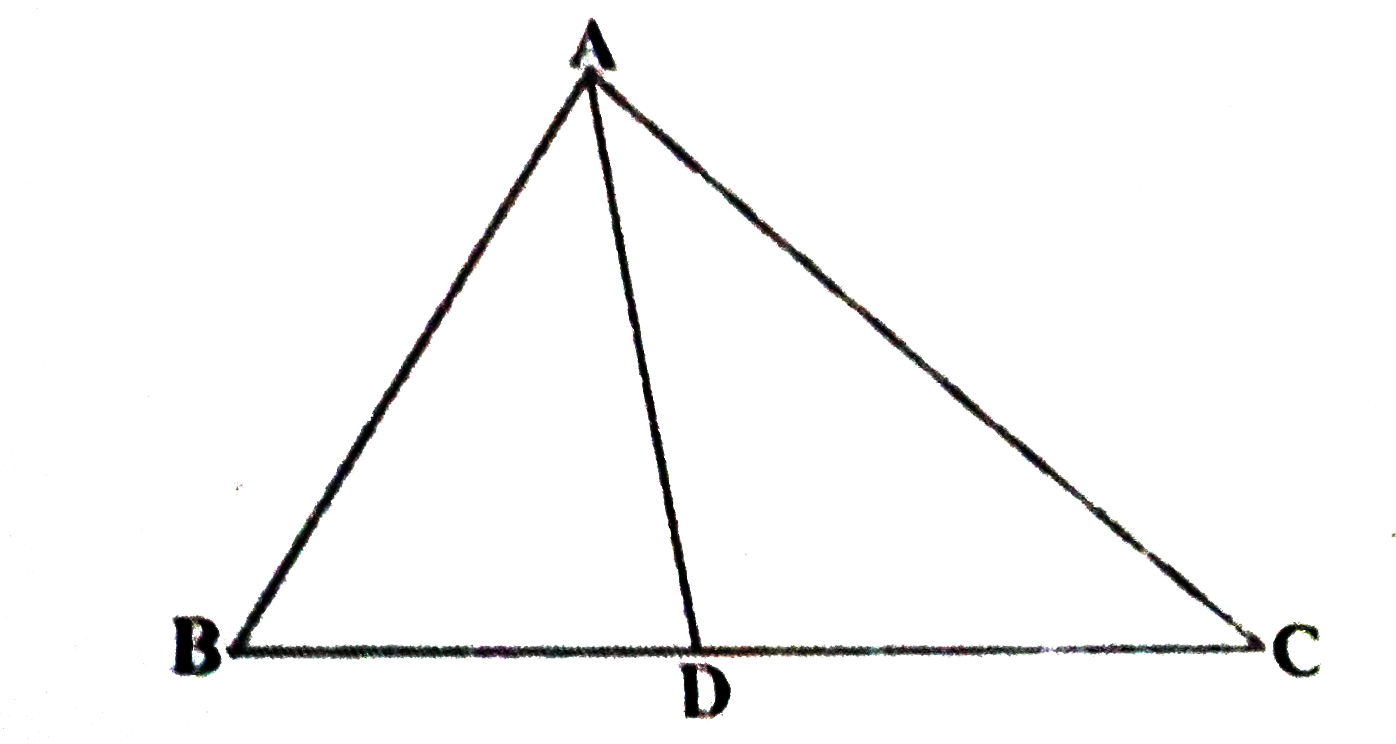In ABC, the bisector of the angle A meets the side BC at D andthe circumscribed circle at E. Prove that DE=a2secA22(b+c)Solution in Bengali
AD = length of angle bisector =2bcos.A2b+c

we have ck+bk=a
k=ab+c
From secant property of circle, we have
AD×DE=BD×DC
⇒AD×DE=bck2
⇒2bccos.A2b+c×DE=bca2(b+c)2
Hence, DE=a2sec.A22(b+c)
Topper's Solved these Questions
- PROPERTIES AND SOLUTIONS OF TRIANGLEBOOK - CENGAGE PUBLICATIONCHAPTER - PROPERTIES AND SOLUTIONS OF TRIANGLEEXERCISE - Concept application exercise 5.1
12 Videos
- PROPERTIES AND SOLUTIONS OF TRIANGLEBOOK - CENGAGE PUBLICATIONCHAPTER - PROPERTIES AND SOLUTIONS OF TRIANGLEEXERCISE - Concept application exercise 5.2
8 Videos
- PROPERTIES AND SOLUTIONS OF TRIANGLEBOOK - CENGAGE PUBLICATIONCHAPTER - PROPERTIES AND SOLUTIONS OF TRIANGLEEXERCISE - Archives (Numerical Value Type)
3 Videos
- PROGRESSION AND SERIESBOOK - CENGAGE PUBLICATIONCHAPTER - PROGRESSION AND SERIESEXERCISE - ARCHIVES (NUMERICAL VALUE TYPE )
8 Videos
- RELATIONS AND FUNCTIONSBOOK - CENGAGE PUBLICATIONCHAPTER - RELATIONS AND FUNCTIONSEXERCISE - All Questions
1119 Videos
Similar Questions
Find the value of a2+b2+c2R2 in any right-angled triangle.
View SolutionThe lengths of sides of △ABC are a units, b units and √a2+ab+b2 units show that greatest angle of the triangle is120∘
View SolutionLet ABCandABC' be two non-congruent triangles with sides AB=4,AC=AC′=2√2 and angle B=300 . The absolute value of the difference between the areas of these triangles is
View SolutionLet Sk,k=1,2,….100 denote the sum of the infinite geometric series whose first term is k−1K! and the common
ration is 1k then the value of (100)2100!+Σ100k=1|(k^2-3k+1)S_k| is ____________
View SolutionIf the function f:[1,∞)→[1,∞) is defined by f(x)=2x(x−1), then find f−1(x)
View SolutionIn figure D is a point on side BC of a ΔABCsuch that BDCD=ABAC. Prove that AD is the bisector of ∠BAC.

View SolutionIf a,b,c,d,e are in continued proportion,then prove that (ab+bc+cd+de)^(2)=(a^(2)+b^(2)+c^(2)+d^(2))(b^(2)+c^(2)+d^(2)+e^(2))
View SolutionIf the bisector of the angle A of triangle ABC meets BC in D, prove that a=(b+c)[1-([AD]^(2))/(bc)]^((1)/(2))
View SolutionThe bisectors of the angles B and C of a triangle ABC , meet the opposite sides in D and E respectively. If DE||BC , prove that the triangle is isosceles.
View SolutionIn ΔABC, the bisector of the angle A meets the sides BC at D and the circumscirbed circle at E. Prove that DE=a2sec.A22(b+c)
View SolutionThe internal bisector of ∠A of ΔABC meets BC at D and the external bisector of ∠A meets BC produced at E. Prove that BDBE=CDCE .
View SolutionIn figure D is a point on side BC of a ΔABCsuch that BDCD=ABAC. Prove that AD is the bisector of ∠BAC.

View SolutionIn TriangleABC with fixed length of BC, the internal bisector of angle C meets the side ABatD and the circumcircle at E . The maximum value of CD×DE is c2 (b) c22 (c) c24 (d) none of these
View SolutionIn ABC, the bisector of the angle A meets the side BC at D andthe circumscribed circle at E. Prove that DE=a2secA22(b+c)
View SolutionD and E are points on equal sides AB and AC of an isosceles triangle ABC such that AD=AE . Prove that B,C,D,E are concylic.
View SolutionThe bisectors of the angles B and C of a triangle ABC , meet the opposite sides in D and E respectively. If DE||BC , prove that the triangle is isosceles.
View Solution
